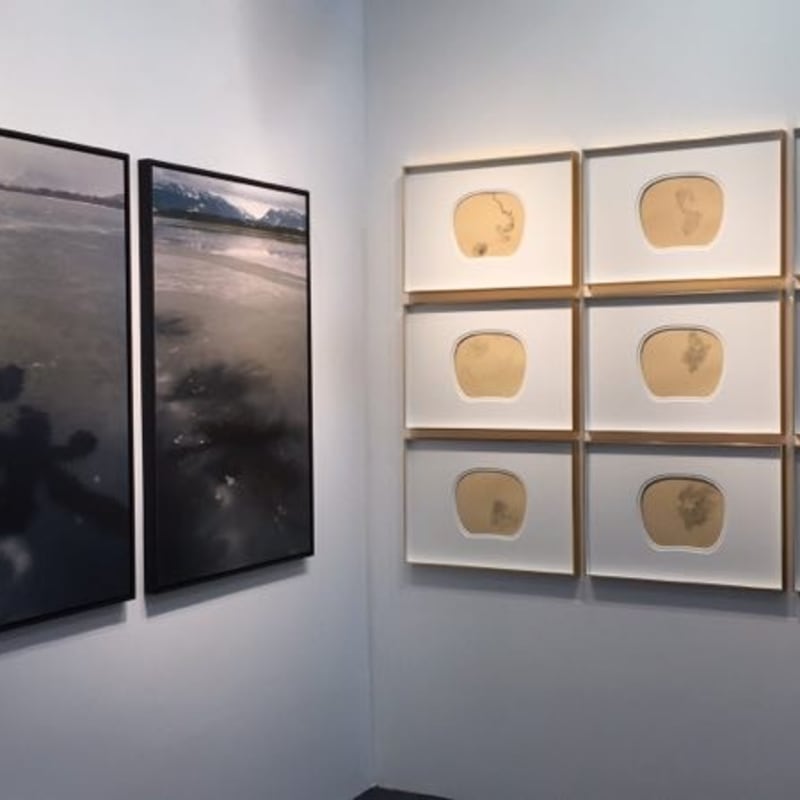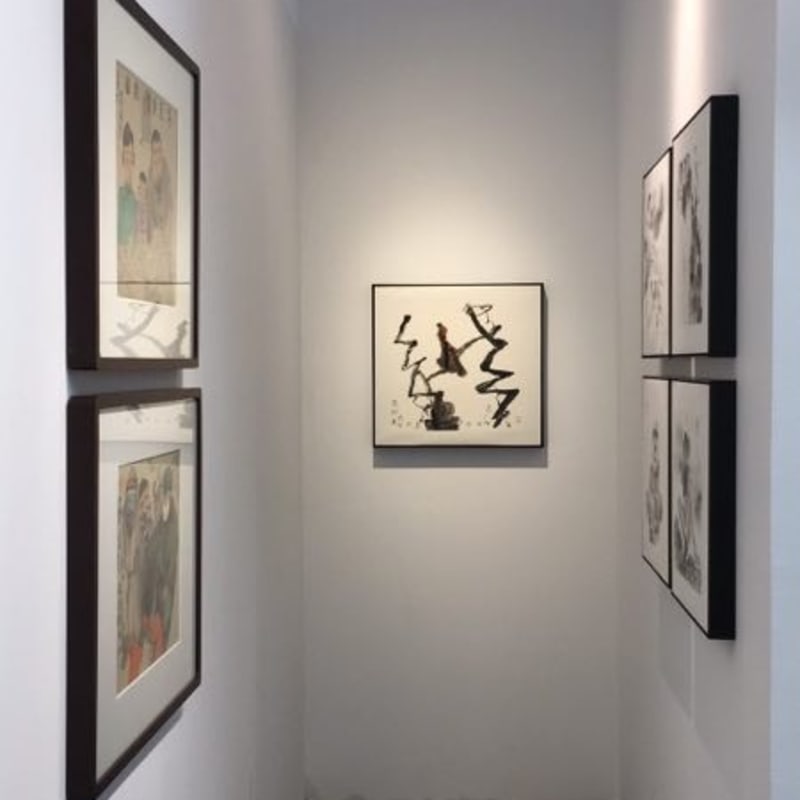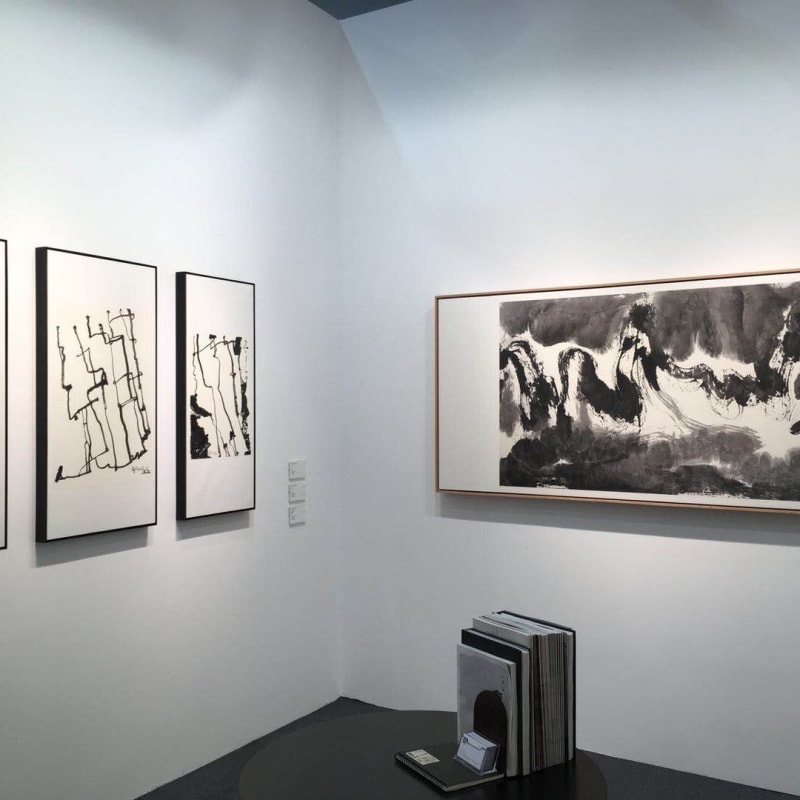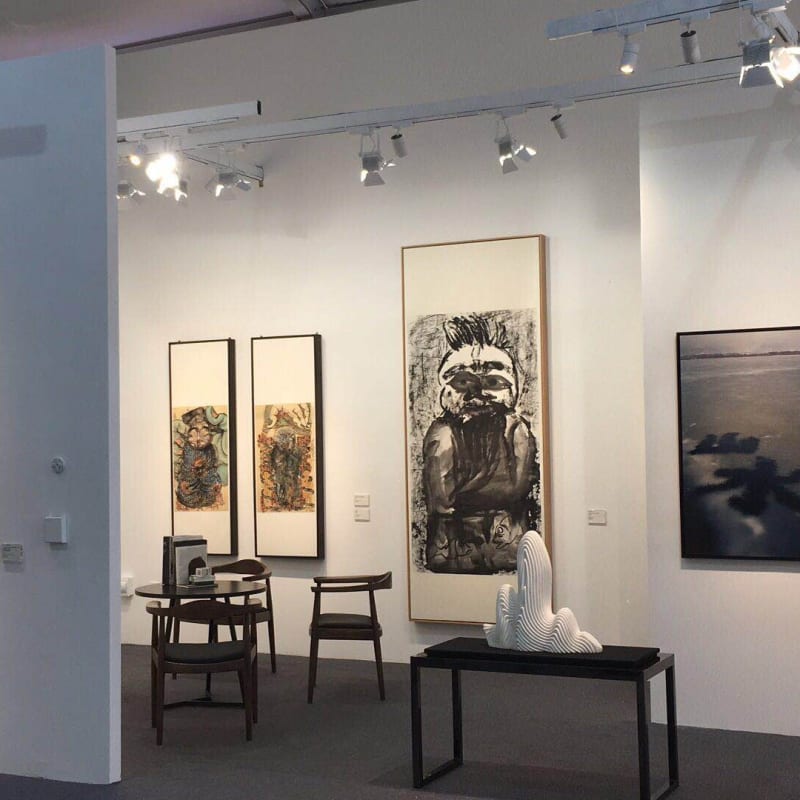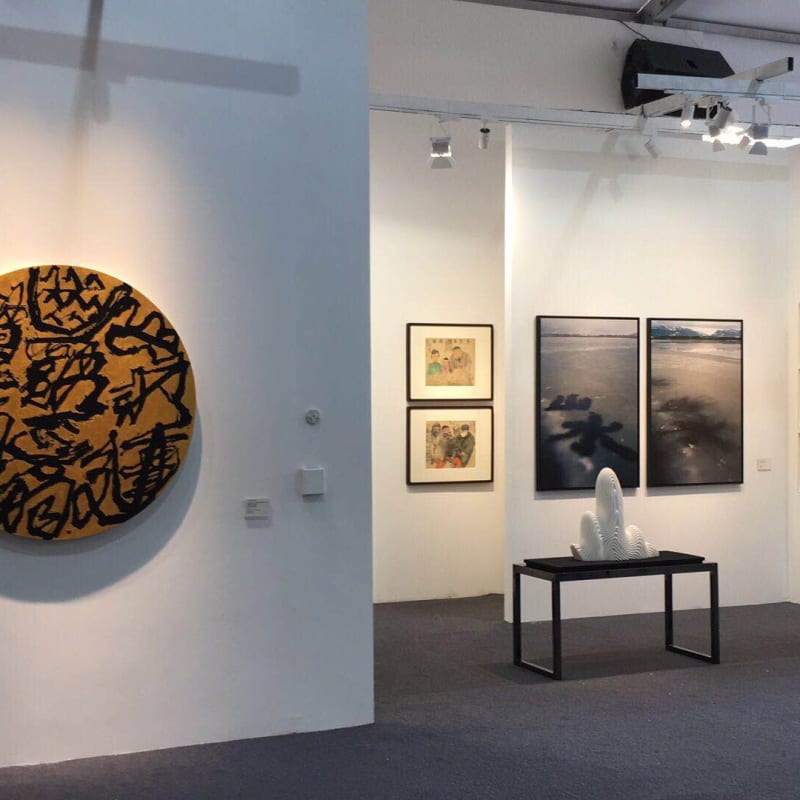INK studio is proud to participate in the first edition of Art Chengdu, the first international art fair in Midwest China. Located at booth A19, the presentation features our Chengdu trio: Li Huasheng, Dai Guangyu, and Wang Chuan. Each is one of the most important artists that Chengdu produced in the last hundred years, but they have distinctive approaches: grid paintings and abstract landscapes, performance art, and linear abstractions, respectively. We will also showcase artworks by Li Jin that are inspired by Tibet, both important historical paintings as well as the most recent paintings from his black and white Being series, in addition to Bingyi's encyclopedic Fairies, Huang Zhiyang's biomorphic marble sculptures, and Wei Ligang's "gold-ink cursive" paintings.
Bingyi
An artist, architectural designer, curator, cultural critic, and social activist, Bingyi (b. 1975, Beijing) has developed a multi-faceted practice that encompasses land and environmental art, site-specific architectural installation, musical and literary composition, ink painting, performance art, and filmmaking. For Art Chengdu, INK studio presents a selection of Bingyi's encyclopedic series Fairies, an ongoing catalog of virtual bio-organismic forms inspired by her exploration of classical literary themes. Through her hypnotic, obsessive endurance and execution both painstaking and nuanced, one senses the loving power of nature itself as it crafts animate life from inanimate matter.
Dai Guangyu
As a visual and performance artist, a curator and cultural critic, and a poet, Dai Guangyu (b. 1955, Chengdu) engages Chinese art history, ink painting culture, as well as Chinese poetics and politics, and his sustained public performance art practice changed the course of performance art in China. For Art Chengdu, INK studio presents a photographic diptych from Dai Guangyu's durational land art performance installation in Germany. With the passage of time, the aesthetic notions connected with"landscape" (shan shui) fixed in people's minds changed as the exit of the legibility of the characters opened the way for a higher level of contemplation. For the artist, this is a striking reminder of the feng shui principle of working with rather than against nature, and the necessity of human humility in the face of the natural world, against which we have trespassed so destructively.
Huang Zhiyang
Also included is the sumptuous white marble sculpture series of biomorphic and landscape forms Possessing Numerous Peaks by Huang Zhiyang (b. 1965, Taipei). Huang sees the natural world as a hyper-organism: humans form communities of organisms that are in turn organisms, recursively in nested levels of complexity. Because each of us is a microcosm of the larger hyper-organism we can directly perceive the animating energy (qi) flowing through the meridians (mai) that constitute both our bodies and the world of which we are a part. Huang's sculptures map these meridians in linear grooves rendering the rhythmic patterns of geomantic energies both visible and tactile.
Li Huasheng
Li Huasheng (b. 1944 in Yibin, d. 2018 in Chengdu) is a classically-trained ink painter who explores the shared phenomenology between mind-hand embodiment in classical brush and ink practice in calligraphy and landscape painting and time- and process-based practices employed in contemporary art. Li's practice includes processual grid paintings, abstract ink landscapes, photography and ink-and-paper-based installations. In commemoration of the artist's recent passing in his adopted home of Chengdu, INK studio will showcase one of Li Huasheng's rarely-exhibited highly-abstract ink landscapes drawn from his deep connection with the mountains of the Himalayan Plateau.
Li Jin
Best known for his lush and colorful depictions of sensory pleasures in contemporary China, Li Jin Li Jin (b. 1958, Tianjin) has now turned his focus towards painting in monochrome, translating his well-honed sensitivity towards color washes into a masterful control of tonality. He paints in a looser, more gestural and expressive daxieyi style, exploiting the accidental effects of the medium. Along with the new series, we present Li Jin's rarely-seen paintings from the 1990's, when he was a young wanderer and sojourner in Tibet in search of an authentic and primal connection to nature. Pulsating with the intensity and fragility of life that he experienced there, the Tibet-period works relate strikingly to his new series, which itself represents another return to a state of pure and unencumbered creativity.
Wang Chuan
A native of Chengdu, Wang Chuan (b. 1953, Chengdu) is widely recognized as one of the pioneers of the post-Cultural Revolution contemporary ink art movement in China. After moving to Shenzhen in 1984, Wang Chuan's art turned towards the abstract. His 1990 conceptual installation, "Blackness" at the Shenzhen Museum is cited by both artists and critics as a seminal, conceptual and experimental turn in the development of ink art in China. Wang Chuan's artistic language is at core a language of lines-at once the living index of the artist's mind and body and the basic element of both writing and iconic depiction. Wang Chuan's lines are thus full of meaning embodying in both process and form his meditations on nature, art, experience, body, fragmentation, home and self.
Wei Ligang
In his career of three decades, Wei Ligang (b. 1964, Datong) has sought a universal language of abstraction based on the linear and spatial compositions of Chinese writing, a language capable of embodying the complexity and expansiveness of contemporary human knowledge and existence. Prominently featured at INK studio's booth, his signature script style of "gold-ink cursive" is derived from the continuous cursive calligraphy of the 17th-century Shanxi calligrapher Fu Shan, and applied with the seal, clerical, and Oracle Bone scripts of antiquity.
INK Studio is an art gallery based in Beijing. Its mission is to present Chinese experimental ink as a distinctive contribution to contemporary transnational art-making in a closely-curated exhibition program supported by in-depth critical analysis, scholarly exchange, bilingual publishing, and multimedia production. Representing more than 13 artists, including Bingyi, He Yunchang, Li Jin, Li Huasheng, Wang Dongling, Yang Jiechang, and Zheng Chongbin, the gallery exhibits works of diverse media, including painting, calligraphy, sculpture, installation, performance, photography, and video. Since its inception in 2012, INK Studio has regularly appeared at art fairs such as the Armory Show (New York), Art Basel Hong Kong, and West Bund Art & Design (Shanghai) and placed works into major public collections, including the Metropolitan Museum of Art, Los Angeles County Museum of Art, Brooklyn Museum, and M+, Hong Kong.
For inquiries, please contact info@inkstudio.com.cn.
